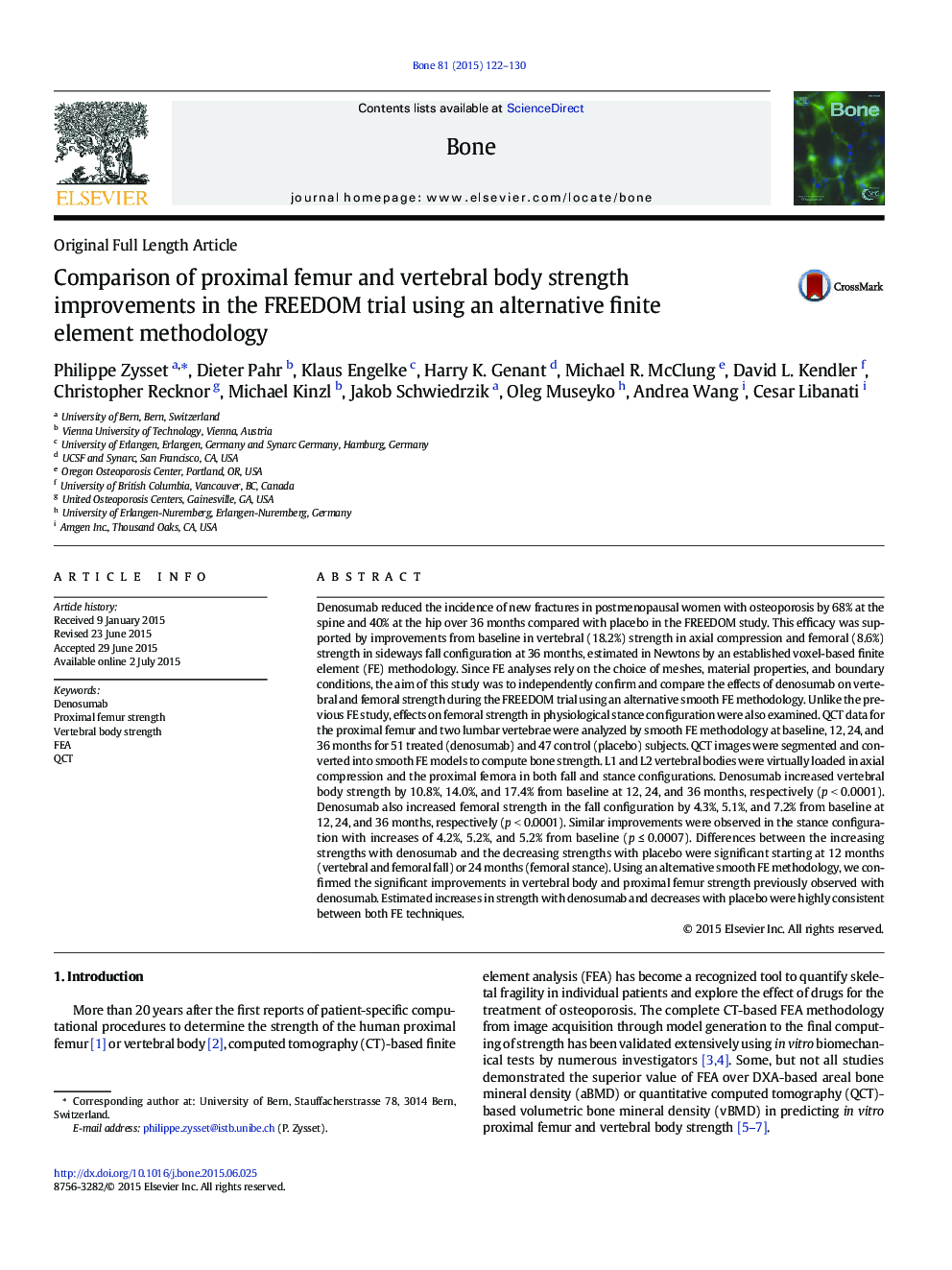| کد مقاله | کد نشریه | سال انتشار | مقاله انگلیسی | نسخه تمام متن |
|---|---|---|---|---|
| 5889242 | 1568138 | 2015 | 9 صفحه PDF | دانلود رایگان |
- Denosumab reduced new spine (68%) and hip (40%) fractures over 3 years in postmenopausal osteoporotic women (FREEDOM study).
- This was supported by vertebral and femoral strength improvements estimated by an established voxel-based FE methodology.
- We independently confirmed these results using a different FE methodology with smooth meshes and other material properties.
- This is the first side-by-side comparison of independent FE methodologies using clinical data.
- Our findings emphasize the robustness of these FE methodologies for evaluating the impact of osteoporosis therapy.
Denosumab reduced the incidence of new fractures in postmenopausal women with osteoporosis by 68% at the spine and 40% at the hip over 36 months compared with placebo in the FREEDOM study. This efficacy was supported by improvements from baseline in vertebral (18.2%) strength in axial compression and femoral (8.6%) strength in sideways fall configuration at 36 months, estimated in Newtons by an established voxel-based finite element (FE) methodology. Since FE analyses rely on the choice of meshes, material properties, and boundary conditions, the aim of this study was to independently confirm and compare the effects of denosumab on vertebral and femoral strength during the FREEDOM trial using an alternative smooth FE methodology. Unlike the previous FE study, effects on femoral strength in physiological stance configuration were also examined. QCT data for the proximal femur and two lumbar vertebrae were analyzed by smooth FE methodology at baseline, 12, 24, and 36 months for 51 treated (denosumab) and 47 control (placebo) subjects. QCT images were segmented and converted into smooth FE models to compute bone strength. L1 and L2 vertebral bodies were virtually loaded in axial compression and the proximal femora in both fall and stance configurations. Denosumab increased vertebral body strength by 10.8%, 14.0%, and 17.4% from baseline at 12, 24, and 36 months, respectively (p < 0.0001). Denosumab also increased femoral strength in the fall configuration by 4.3%, 5.1%, and 7.2% from baseline at 12, 24, and 36 months, respectively (p < 0.0001). Similar improvements were observed in the stance configuration with increases of 4.2%, 5.2%, and 5.2% from baseline (p â¤Â 0.0007). Differences between the increasing strengths with denosumab and the decreasing strengths with placebo were significant starting at 12 months (vertebral and femoral fall) or 24 months (femoral stance). Using an alternative smooth FE methodology, we confirmed the significant improvements in vertebral body and proximal femur strength previously observed with denosumab. Estimated increases in strength with denosumab and decreases with placebo were highly consistent between both FE techniques.
Journal: Bone - Volume 81, December 2015, Pages 122-130
